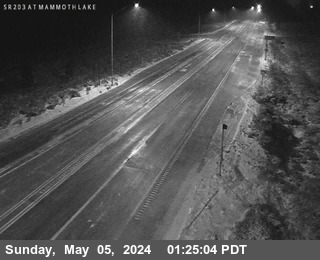Brought to you by Howard Sheckter
Chance of Thunderstorms through the Holiday Weekend….MJO off the Charts over the Western Pac
Thursday July 2, 2015
Flash Flood Watch Today: http://forecast.weather.gov/showsigwx.php?warnzone=CAZ073&warncounty=CAC051&firewxzone=CAZ273&local_place1=17 Miles ESE Bodie CA&product1=Flash+Flood+Watch&lat=38.0781&lon=-118.739#.VZgAMGfbKUk
Saturday the 4TH of July:
An upper wave moving NW along the periphery of the upper high is tracking NW along the CA/NV border. Abundant moisture and instability will combine to bring a good chance of rainfall to Mono County, Later this AM and this afternoon. Not every part of Mono County will get heavy rain. However, the areas that do get thunderstorm’s, it is possibly because of the nature of this pattern to get torrential rains and flash flooding. So if you are outdoors today, have a plan to be able to seek shelter if necessary. A flash flood watch goes into effect at 11:00am this morning and ends at 8:00PM this evening. Precipitation should end this evening until Sunday afternoon when more storms are possible. However, there does not seem to be the focusing Sunday for as much heavy rain as today.
Friday PM:
Scattered mainly late afternoon and evening thunderstorms are expected today with an uptick in action tomorrow afternoon due to wave moving from south to north.
It will be drier and a bit cooler next week with only isolated action.
Here is an important update from the Climatic Prediction Center today:
During the past several days, an extremely strong anomalous westerly wind burst, partly caused by tropical cyclone activity, developed over the equatorial western Pacific just west of the Date Line. This feature helped contribute to a very strong Phase-7 projection on the RMM MJO index, more than three standard deviations outside the circle. Dynamical models favor further amplification of the RMM Index, followed by gradual weakening, with the ECMWF continuing to depict further eastward propagation of the intraseasonal signal, while the GFS maintains a more stationary pattern.
Two additional tropical cyclones developed over the northwestern Pacific during the past several days, both within the high confidence formation shape depicted on the 30 June GTH Outlook. Tropical Storm Linfa is currently east of the Philippines, and may make landfall over Luzon over the next several days. Tropical Depression 11W formed near 170E and 10N, and is forecast to move westward or west-northwestward while intensifying. Dynamical models do not favor additional tropical cyclogenesis over the western Pacific, so the TC formation shape was removed from the updated outlook. The enhanced precipitation shape was modified based on the latest tropical cyclone track forecasts.
The National Hurricane Center is currently monitoring two systems that have a potential to develop over the southwestern portion of the East Pacific basin during the next 5 days. Additionally, the Central Pacific Hurricane Center is monitoring a system near 140W and 10N that has a low potential for development during the next 48 hours. For the updated GTH Outlook, a broad high confidence TC formation shape encompasses all three areas of potential development. A moderate confidence TC shape was maintained south of Hawaii for Week-2, and dynamical models, the MJO, and the El Nino base state all favor new potential cyclogenesis over the eastern Pacific during Week-2.
———————————————————————————————————————————————————————————
A moist South East flow with transient areas of upper divergence will continue through the holiday weekend. With that said, a drying trend will begin Sunday and continue into next week. There is some differences on the handling of the upper low off the central coast next week. Will it come inland; cut off and provide an area of upper divergence focused only it its NE quad. Will have to see. However, it will provide a lot of drying Sunday into Monday. The NWS has isolated action for early next week with a lot less humidity. Highs in the upper 70s and low 80s, lows in the low 50s.
MJO
The Madden Julian Oscillation is off the charts at the moment for July. This may be the only time of this intensity this time of the year since the early 1980s; which coincidently was one of the biggest El Ninos. 1982/9183. SEE: http://www.cpc.noaa.gov/products/precip/CWlink/MJO/CLIVAR/ecmm.shtml
The system is responsible for modulating tropical convection as it moves west to east along the equator. At the moment the core of the enhanced state is located about 160E with its suppressed state over the Indian Ocean. It will be shifting east and weakening next week. Well see if there is any effect over the southern portion of the Hawaiian islands later next week. Eventually it will modulate Eastern Tropical Pacific, (East Pac) Watch out for TS Storm action moving along the Mexican coast around the middle of July.
Toms Corner……
About last night rains….
These MCVs are often missed on many initial analysis because of the scale but are extremely important in initiating new convection. and providing the upper divergence component of a conv/div couplet. Because these vort maxes appear to come and go so quickly, its is hard follow them from day to day with any continuity on the computer models. Only large scale systems such as ex-hurricane’s easterly waves and large MCSs get carried through on models from run to run with any continuity. The MCV is the most common upper level convective focus/ trigger mechanism around the periphery of the 4 corners high which are often mis-identified as moisture surges. If forecasters would just look at the SPC analysis they will see many areas of upper divergence that that cannot be resolved in the traditional synoptic scale vort analysis in many cases.
A mesoscale convective vortex (MCV) is a low-pressure center within an mesoscale convective system (MCS) that pulls winds into a circling pattern, or vortex. With a core only 30 to 60 miles (97 km) wide and 1 to 3 miles (4.8 km) deep, an MCV is often overlooked in standard weather analysis. But an MCV can take on a life of its own, persisting for up to 12 hours after its parent MCS has dissipated. This orphaned MCV will sometimes then become the seed of the next thunderstorm outbreak. An MCV that moves into tropical waters, such as the Gulf of Mexico, can serve as the nucleus for a tropical storm or hurricane.




